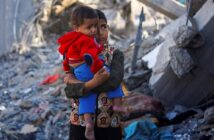Chinese President Xi Jinping on Tuesday made his first visit to Wuhan since a coronavirus outbreak forced a lockdown of the city of 11 million people, in a sign that authorities’ efforts to control the virus are working.
Xi’s arrived on the same day that Wuhan shut the last of 14 temporary hospitals that had been opened to manage a surge in coronavirus patients, news website The Paper reported..
Earlier on Tuesday, China said it had just 19 new coronavirus infections on Monday, down from 40 a day earlier. That also marked the third straight day of no new domestically transmitted cases in mainland China outside of Hubei province, where Wuhan is located, even as the disease spreads rapidly in other countries, including Italy and the United States.
“The situation of coronavirus prevention in Hubei and Wuhan has shown positive changes and achieved phased results, initially realising goals to stabilise and turn around the situation,” the official Xinhua news service cited Xi as saying.
He acknowledged that people under lengthy quarantine – Wuhan and much of Hubei province have been under strict controls since late January – may have frustrations to vent.
“We must understand and tolerate them,” he was quoted as saying.
During his visit, a masked Xi was shown meeting with local officials, medical staff, and volunteers, state broadcaster CCTV reported. He addressed frontline medical workers and a hospitalised patient by videolink.
Residents of Wuhan were shown cheering Xi from their apartment windows, while negative comments on China’s heavily censored social media were quickly removed.
“Why only come now when the epidemic is almost over?” one comment on the official People’s Daily’s Weibo feed said before disappearing.
News of Xi’s Wuhan visit gave a lift to Chinese stocks, with the blue-chip index ending the day 2.1% higher after falling into negative territory in morning trade.
“It is obvious that Xi could not have visited Wuhan earlier because the risk of him contracting the virus there was initially too high,” Zhang Ming, a professor at Renmin University in Beijing, told Reuters.
“He is there now to reap the harvest. His being there means the CCP (Chinese Communist Party) may declare victory against the virus soon,” Zhang said.
China came in for criticism at home and globally over its early response to the outbreak, suppressing information and downplaying its risks, but its draconian efforts at control, including the lock-down of Wuhan and Hubei province, have been effective at curbing the spread.
Xi, who was mostly absent from Chinese state media coverage of the crisis in its early days, has become far more visible in recent weeks.
DWINDLING NEW CASES
Of the new coronovirus cases announced by China, 17 were in Wuhan. Two others – in Beijing and Guangdong province – involved people who had arrived from Britain and Spain, respectively.
That brings the total number of confirmed cases in mainland China so far to 80,754.
Chinese authorities have ramped up warnings about the risks from foreigners and Chinese nationals travelling to China from viral hot spots abroad such as Iran and Italy. As of Monday, there were 69 imported cases.
Also on Tuesday, Hubei said it would implement a “health code” system to allow people in areas at medium or low risk to start travelling. Qianjiang, a city in Hubei, said that all traffic checkpoints will be removed, public transportation will restart and firms will resume work in the near future, according to a report on an official website.
Globally, more than 114,300 people have been infected by the coronavirus and over 4,000 have died, according to a Reuters tally of government announcements.
Since the outbreak, 59,897 patients have been discharged from hospitals in China. Recently discharged patients need to go into quarantine for 14 days.




